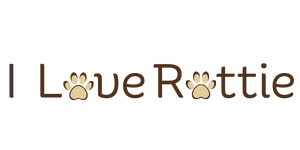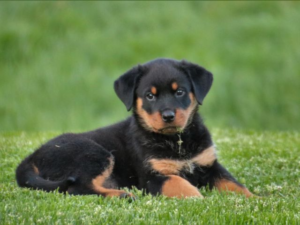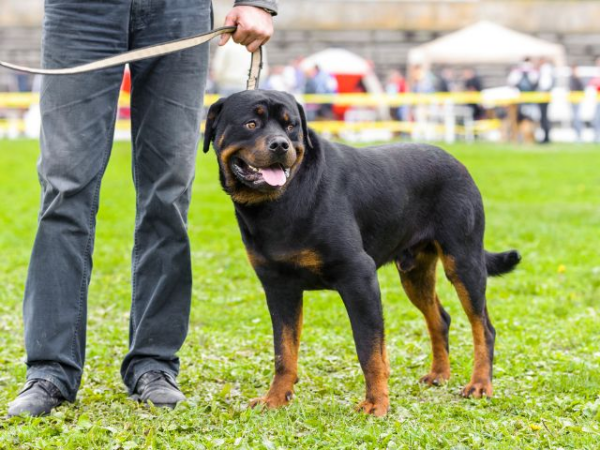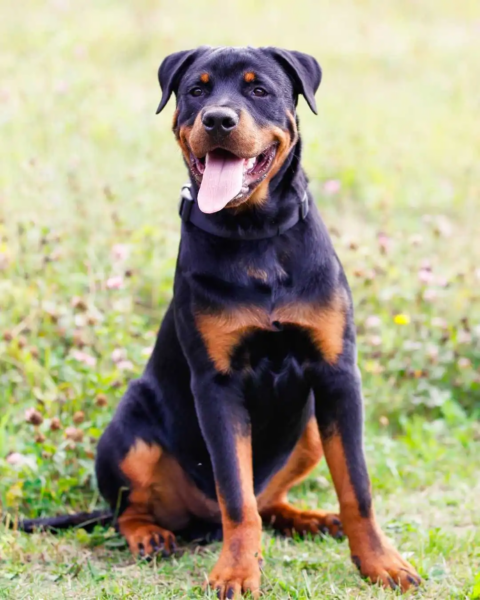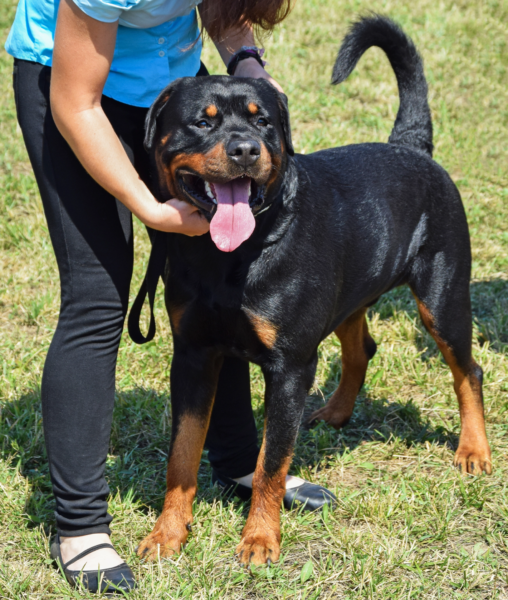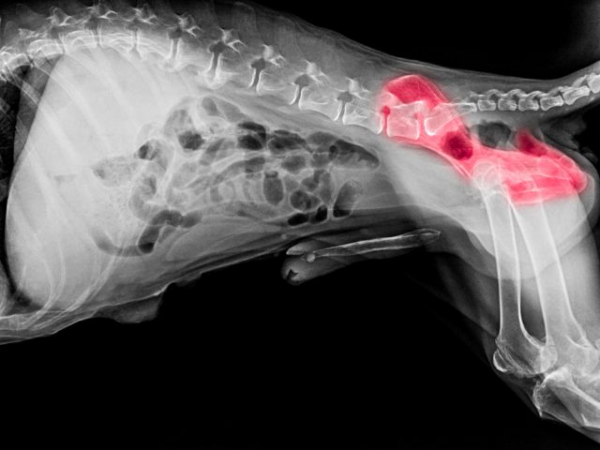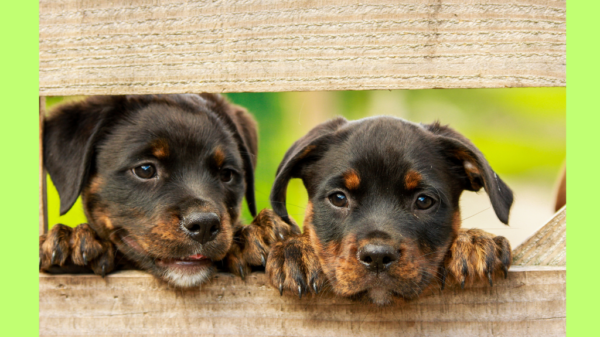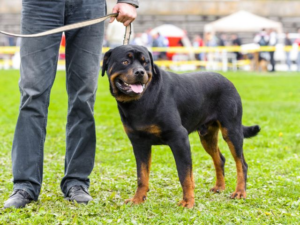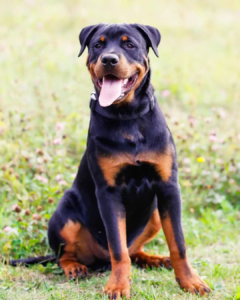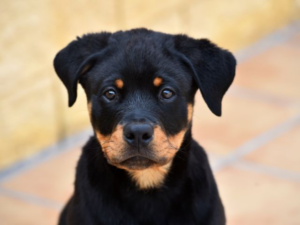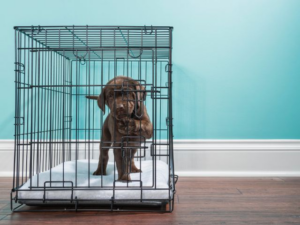Introducing a new puppy into your home is an exciting time, and a highly rewarding experience, but it also comes with the responsibility of training them to become a well-behaved and happy member of your family. Puppy training at home is not only convenient but also strengthens the bond between you and your Rottweiler. This journey requires patience, consistency and commitment to instill good behavior and develop a strong foundation for lifelong companionship.
In this guide, we will explore effective and humane methods for puppy training in the comfort of your home. From basic commands to socialization, each step plays a crucial role in shaping your puppy’s behavior. Whether you are a first-time dog owner or looking to refine the skills of a new addition to your family, this comprehensive guide aims to provide insights, tips, and practical exercises to make the puppy training process enjoyable for both you and your four-legged friend.
So, let’s embark on this exciting adventure of fostering a well-mannered, happy, and loving relationship with your puppy through positive and constructive training techniques.
To learn about clicker training, read here.
Some Basic Puppy Training Tips
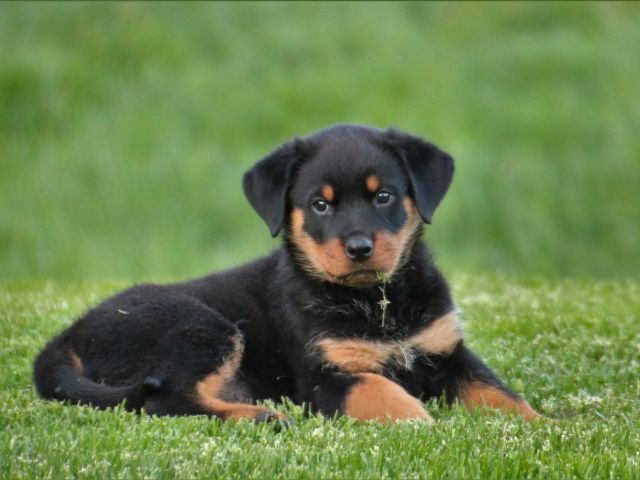
Start Early
It’s a great idea to start puppy training your Rottweiler puppy early on, commencing just a few days after you bring him or her home. I recommend not being tempted to “skip” these few days however, as it’s important to let your puppy settle in and get comfortable, avoid any additional stress and allow yourself and your new Rottie pup a little time to get to know each other first!
A great first command to teach which many young puppies will find incredibly engaging (and easy to learn!) is “find your toy”. Start by hiding your pup’s favorite toy, before voicing the command. Reward your furbaby with a game as soon as they find it; not only is this an excellent bonding activity, but it is also the first baby step in getting both of you used to the principles of positive reinforcement (see below).
Positive Reinforcement
The methods you should be using when it comes to puppy training your Rottweiler should be reward-based, and should never inspire fear or anxiety in your new pup. Put simply, positive reinforcement involves rewarding desired behaviors (such as following a command, or toileting in the correct location) with something the puppy values, such as treats, praise, or playtime.
The reward strengthens the likelihood of the behavior being repeated at the appropriate time or (in the case of commands) when a set cue is given. Over time, puppies learn that responding in a certain way to a certain command (eg, sit), or in a given situation (eg, remaining calm when the postman arrives) results in good things happening!
Reward-based methods have been proven by science to be at least as effective (if not more so) than other methods, including those relying on punishment for bad behaviors [1]. What’s more, unlike punishing your dog, positive reinforcement won’t affect your bond, or undermine your Rottie’s emotional and psychological wellbeing during puppy training.
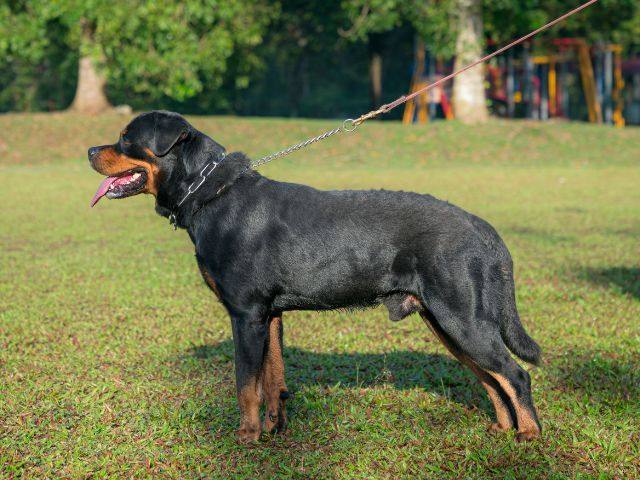
Understand Dominance
A wide body of scientific research shows that the outdated “dominance theory” many dog owners (and, tragically, some poorly-informed trainers) still cling to is vastly oversimplified at best, and may be dangerous for our dogs and us at worst.
Dominance theory emphasizes a social hierarchy between canine group members [2] and has long influenced popular ideas about dog behavior and puppy training. Unfortunately, the enduring false belief that pet owners ought to aim to establish dominance over their dogs still leads to some individuals applying completely unnecessary force and intimidation tactics.
Increased aggression results [3] as the dog does not understand this misguided attempt to communicate. The key thing to understand about dominance theory in dogs is that it is more complex than you might think, and that it has no place in influencing how you train your Rottweiler – period!
Socialization
The socialization period in puppies starts from around week 3 of age, and continues up until around week 12-14 [4]. In fact, the primary socialization subphase only lasts up to week 5, and is actually the most influential phase when it comes to your Rottie developing some key (and potentially lifelong) social skills, behavior patterns, and – of course – positive and negative associations, including fears and phobias [5].
From around 3-6 weeks of age, puppies will show a reflex “startle” response in reaction to sudden or intense sounds (such as fireworks, or a child shouting). At this age, the startle is followed by immediate recovery and isn’t comparable to the fear reaction experienced by an adult dog [4]. Around week 6 or 7, the first actual fear responses to novel stimuli start (eg, encountering a vacuum cleaner for the first time at 8 weeks of age).
Given the above, it’s vital that socialization starts with the breeder, and then continues with you once you bring your Rottweiler puppy home! When formulating your puppy training timeline, be sure to make socialisation a priority from day one.
However, that doesn’t mean it’s too late to start puppy training and help your puppy overcome these fears once brought home; far from it. But better yet, pick a breeder who has made sure their pups encounter vacuum cleaners, loud noises, and a whole variety of different people and animals before you even bring your Rottie home.
Puppy socialization classes (once your new puppy has had all their vaccinations) are also a good addition when you begin training. They’re an amazing socialization aid and help teach your puppy acceptable ways to interact with others in a new environment. Puppy parents should be realistic however about the fact that group classes provide a lot of distractions, and so teaching your puppy commands is probably going to be more effective at home, away from all their new friends!
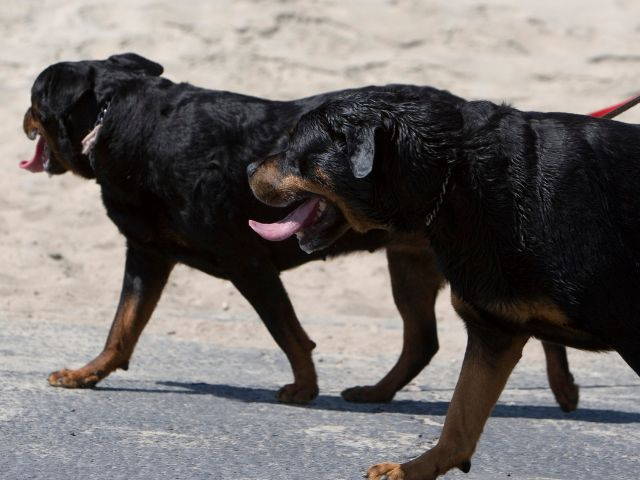
Consistency
Consistency is key when it comes to puppy training, and a lack of this crucial element will result in confusion, stepbacks, and ultimately poor results. Establishing a predictable pattern of obedience behaviors takes time and repetition, and even the smartest and keenest Rottie will forget learned behaviors if these aren’t reinforced from time to time to keep them fresh.
Remember too that dogs thrive on routine, and that providing consistent cues and rewards makes it a lot a lot easier for your Rottweiler to understand and comply with your commands. Most dogs aim to please, and if they don’t it’s probably because they don’t quite understand what you’re asking of them!
Be sure to use the same word to express what you want. Switching the word up in the next session is a surefire way to confuse your puppy!

Patience
Training your new Rottweiler puppy isn’t just about them; it’s also about you! Maintaining patience (even in the face of frustration) is vital, and you should never take out any exacerbation on your pup.
Whilst Rottweilers are fast learners as a general rule, dogs are individuals and will learn at different paces. Rushing the training process can lead to confusion, mistrust or stress. Take things slow where necessary and give the process the time commitment it deserves.
Remember too that puppies have a short attention span and will also need potty breaks! As your puppy grows, you can increase the length of training sessions from 1-2 minutes initially, up to 10 minutes (maximum!) for older puppies. If you skip the baby steps and try and jump ahead to long training sessions before your Rottie is ready, you’ll quickly find that your puppy starts to lose interest.
Obedience Training
Obedience is a branch of dog training that focuses on teaching and reinforcing commands and behaviors that promote “doggy good manners”. In this way, large, powerful dogs such as Rottweilers can be taught to live harmoniously in a human-centric world, without ruffling any proverbial feathers!
After all, if such a large and powerful dog was allowed to simply run and jump up at every person they encountered on a walk, or didn’t learn that rough play with human hands is not appropriate in polite society, we may find ourselves with some problems! As COAPE accredited behaviorist Petrina Firth puts it, people may think Rottweilers are a bit scary at first, but “by showing them they’ve got good manners, you can take the opportunity to prove these strangers wrong.” [6].
Training your puppy to understand and respond to cues starts at the root level with simple commands such as “stay”, “down” and “leave it” – all the basics! Most puppies can master these within a couple of weeks, providing a solid basis from from to progress onto the more advanced stuff, if desired.
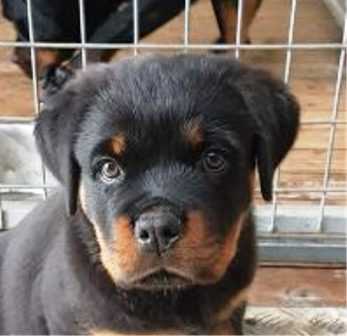
Crate Training
This is an important part of basic puppy training, and should be one of the first things on your puppy training timeline that you aim to tick off! All you’ll need practically speaking is a suitable crate (with some bedding), and a supply of puppy treats!
Start by opening the crate door and rewarding your puppy with treats or fuss every time they explore inside. Once your puppy learns that being in the crate is a pleasant experience, you can start feeding them meals in there, and begin gradually closing the door of the crate for short periods of time. Over time, you’ll increase to longer periods with the door closer, and gradually start to leave the room.
When done correctly, crate training teaches your Rottweiler that the crate is a safe haven, a space they can relax and feel comfortable on their own. It also provides a safe place you can leave your Rottie for periods of a few hours, and overnight.
Command Training
The principles of positive reinforcement discussed earlier in this article can be used to great effect when it comes to teaching both basic and more advanced commands to your Rottie pup. Like many other vets and dog trainers, I recommend starting simple. The following commands should form the basis of your initial training:
● “Sit” – self explanatory.
● “Stay” – likewise.
● “Come” – don’t underestimate the importance of recall when it comes to keeping your dog safe on walks.
● “Leave it” or “No” – also a really important one from a safety point of view.
● “Down” – the action that should be taught is actually lying down (especially if you want to progress to “roll over” at a later date). You can use “No” for other miscellaneous undesirable behaviors such as jumping up at people.
● “Paw” – not really a requirement, but nice to have in the toolbox, and can come in handy if you ever need to inspect your Rottweiler’s feet for injury after a walk.
Once you’ve mastered the above, you may wish to move onto teaching advanced commands such as “roll over”…but remember to learn how to walk, before you try and run!
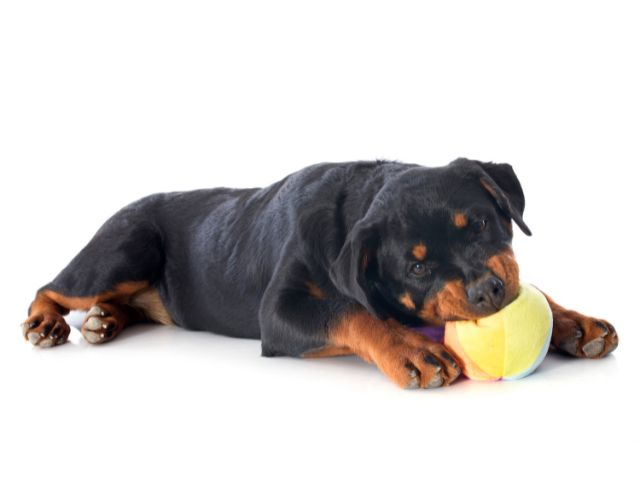
Use of Toys
As well as indulging in the odd game of “find your toy” (a joyful frivolity but actually a clever practice of positive reinforcement principles in disguise!) toys are also important because you’ll need to treat your Rottie pup to chew and play with their designated playthings rather than your treasured belongings or even you! Due to the size and power of a Rottweiler puppy, especially once he or she starts growing big, durability is a key feature to select for when choosing appropriate training toys.
It’s also a good idea to purchase two identical (or very similar) toys that you can use when practising swaps and trades with your puppy. The idea here is to train your dog to be happy with the idea of trading anything they have in their mouth for what you’ve got in your hand. Not only is this a neat trick, it’s also a useful safety command for when your Rottie inevitably starts chowing down on something they shouldn’t!
Corrections
We all make mistakes: after all, we’re only human (or in your Rottie’s case, canine!) So, when the situation inevitably arises and you need an appropriate means of correcting a mistake that your dog has made during training, here’s how to be sure you are correcting, correctly!
It’s essential to address the mistake immediately, the moment it happens and without delay, so that your Rottweiler puppy associates the correction with the intended behavior. Use clear, consistent commands to avoid confusion. And never punish if your puppy gets something wrong, but rather be sure to reward him or her when a behavior that is closer to the desired end result is exhibited. In this way, you can positively redirect your dog towards the intended behavior.
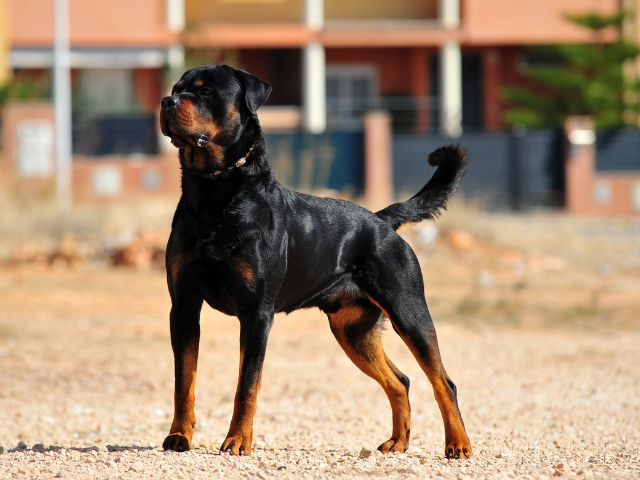
Your Rottie Training Timeline
3-12 Weeks:
● Socialization is key! Note that this goal starts from 3 weeks of age, so your pup will still be with the breeder. Pick a Rottie breeder who understands the importance of early socialization (thankfully most do) and is happy to discuss what they’re doing in this regard.
● Let your puppy stay with their littermates until 8 weeks of age. Early removal from the litter will stunt socialization [7].
● Focus on crate training from 8 weeks of age.
● Get your Rotweiller puppy used to nail care and grooming (including ear cleaning) so that these routine practices will be readily accepted later in life.
● Start training your Rottie pup to chew toys rather than fingers, shoes or furniture (trust me, you’ll be glad later that you did!)
12-16 Weeks:
● Potty training will be complete for some dogs at this point, but don’t stress if you’re not quite so far along in the housebreaking process. Puppies need much more frequent potty breaks than adult dogs due to their smaller bladders and faster metabolism. Plus, learning impulse control when it comes to pees and poops takes time!
● Teach basic, simple commands as outlined above.
4-6 Months:
● Make leash training a priority. By six months of age, puppies should be able to walk politely on the leash. Starting at a young age helps!
● Chew toy training should be complete by this point; a six month old Rottie pup should not still view chewing your possessions, parts of the home or parts of you as a game!
6-12 Months:
● Begin teaching advanced commands (if wished).
● Advanced leash training can be started if wanted.
● Ensure socialization remains ongoing; older Rottie pups can “forget” some aspects of socialization if not regularly exposed on a continual basis.
>12 Months:
● Ongoing training is key to keep previously learned concepts fresh.
● Regular exercise is crucial for large, active dogs such as Rottweilers and will help your Rottie stay focused during training sessions.
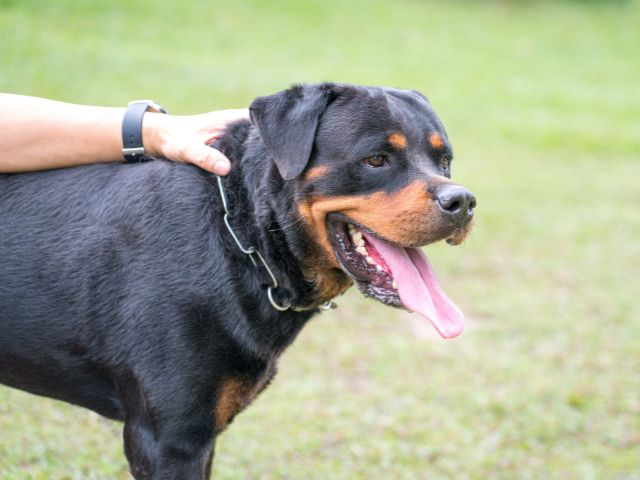
Summary on How To Train Your Puppy
In welcoming a Rottweiler puppy into your home, the journey of training unfolds as an exciting and rewarding experience. Beyond the responsibility of instilling good behavior, home training establishes a strong bond between you and your furry companion. This comprehensive guide navigates the process with insights, tips, and practical exercises, emphasizing patience, consistency, and positive reinforcement to shape your puppy’s behavior for a lifelong companionship.
Starting early, the guide advocates for a gradual introduction to training, allowing the puppy to settle in and build familiarity. Positive reinforcement emerges as a cornerstone, promoting desired behaviors through rewards like treats, praise, or playtime. Rejecting outdated dominance theories, the guide encourages understanding complex canine behavior and fostering a positive training environment.
Socialization, particularly during the critical early weeks, is emphasized for developing essential skills and positive associations. Consistency becomes pivotal, creating predictability and reinforcing learned behaviors. Patience is stressed, acknowledging individual learning paces, and the importance of a consistent routine. The guide progresses to obedience training, focusing on basic commands, and then advances to leash training, command training, and the introduction of toys.
Highlighting the significance of corrections, the guide advocates for immediate and clear responses, redirecting behavior positively. A structured timeline guides through the stages, from socialization in the first weeks to ongoing training and exercise beyond 12 months. The guide culminates in emphasizing regular training sessions and exercise for a well-mannered, happy, and focused Rottweiler throughout its life.
References
- Vieira de Castro, A.C., Araujo, A., Fonseca, A., Olsson, A.S. and Clegg, S. (2021) ‘Improving dog training methods: Efficacy and efficiency of reward and mixed training methods’, Plos One, 16(2).
- Da Vinci, G., Fausak, E.D. and Grigg, E.K. (2023) ‘Defining Dominance in Domestic Dogs (Canis familiaris): A Scoping Review with Recommendations for Human-Canine Interactions’, UC Davis E-Research.
- Herron, M. E., Shofer, F., S., & Reisner, I. R. (2009) ‘Survey of the use and outcome of confrontational and non-confrontational training methods in client-owned dogs showing undesired behaviors’. Applied Animal Behaviour Science, 117(1-2), 47-54.
- Stolzlechner, L., Bonorand, A. and Rieme, S. (2022) ‘Optimising Puppy Socialisation–Short- and Long-Term Effects of a Training Programme during the Early Socialisation Period’, Animals, 12(22).
- May, D.A. (2023) ‘Ten Worst Dog Breeds for Cat Owners’, Very Real Vet.
- Firth, P. (2024) ‘How to Train a Rottweiler Puppy: The Ultimate Guide’, Zigzag.
- Kearl, M. (2021) ‘How to Train a Rottweiler Puppy: Training Timeline’, American Kennel Club.
